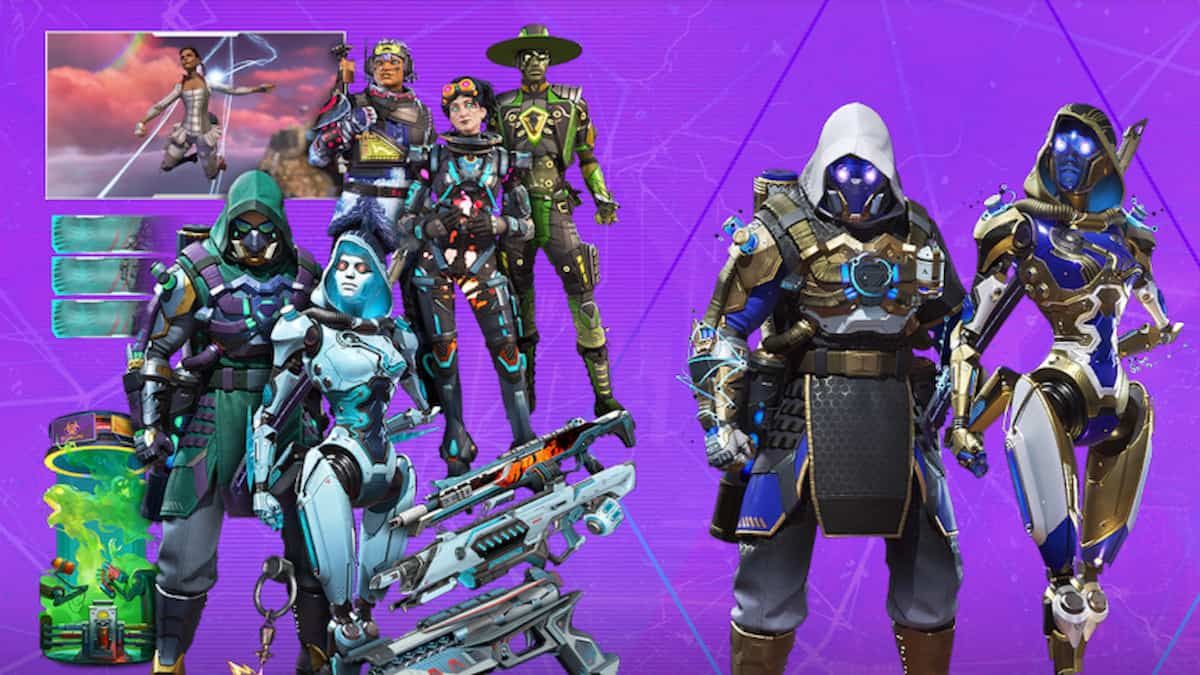Data mining has become a hot topic of discussion in the Apex Legends community as of late. What was once purely the domain of players interested in finding hints of new legends and items coming to the game has become a significant issue that the competitive community is divided over.
Most of the discussion on data mining and if it should be allowed began with a discussion on stream between two pro players, NRG’s sweetdreams and Spacestation Gaming’s DROPPED. The ensuing comments and tweets consumed most of the pro scene and have quickly devolved into memes, inside jokes made on ALGS broadcasts, and exhaustive threads on Twitter and Reddit.
So what exactly is data mining, and why is it causing so many issues in Apex? Check out the guide below for everything you need to know.
What is data mining in Apex Legends?
Data mining in video games is the commonly-referred-to process of going into the game’s files and finding information embedded in the game’s code. Typically, this process requires the help of some third-party software to read things.
Usually, live service games like Apex that undergo regular updates will begin loading files for new things coming to the game in updates before the actual release of those things. Sometimes, that’s sound files for a new legend or recoil patterns for a new weapon. Once these smaller things are found in the game files, people can infer if and when new things are coming to the game. Several guns and legends were teased or found by data miners finding information for them in the game’s files before Respawn ever began teasing them.
Since accessing these files isn’t changing anything about the game or manipulating its code, it’s a bit of a gray area as far as whether data mining is allowed for the average player or not. The EA user agreement prohibits players from extracting “source code or other data from EA services,” which seems to cover data mining, but data miners have been openly operating and posting their findings to social media for years and little to no repercussions have been brought down on them.
New items and legends aren’t the only things that players can find by data mining Apex, however.
Should data mining be allowed for ALGS teams?
The data mining controversy that swept over the competitive community dealt with team coaches and analysts specifically data mining the game files to determine ring exclusion zones, or where it’s impossible for games to end when playing on the Apex Legends Global Series client.
Related: Apex Legends pros in an uproar over the fairness of ‘data mining’ zone information
The ALGS does not operate on the same game client as the base Apex game. Several rings that exist in the base game are taken out of the pool of available zone endings for ALGS to promote fairer endings, prevent late zones that are mostly unplayable terrain and to avoid heal-offs. The old days of Apex pro play would often feature these heal-offs where two or more teams were stuck on different floors of a structure while the final zone closed in, with no real way for one team to get to the other. Teams would try to time their healing items with the close of the zone to eke out a win against the other team, surviving the final ring’s massive damage a split-second longer than another team to get a victory.
Some players found this style of ending exciting, but ultimately, the ALGS organizers wanted to promote victories by means of gun skill and positional dominance, rather than a niche healing mini-game.
By data mining, some ALGS coaches and analysts can find the zones that the ALGS is specifically not using. That way, they can give their teams a better idea of where zones might end up when they see the ring pull in one direction or another on the map. It’s not telling teams exactly where final zones will go, since there’s still plenty of variance in final zones and the exact location of where zones will end can change slightly even in ones that look exactly the same, but it can give teams a little bit of an advantage.
Should that be legal for ALGS teams to do, or should it not be? That’s the question that swept through the community for a while. The files that coaches and analysts are accessing aren’t encrypted in any way and there isn’t a clear rule against doing something like this.
As it stands, ALGS organizers have yet to speak out on the topic publicly. Until they do, teams that have access to programs and files like these will most likely continue to look for every advantage over their competition they can get.







Published: Dec 8, 2022 04:44 pm